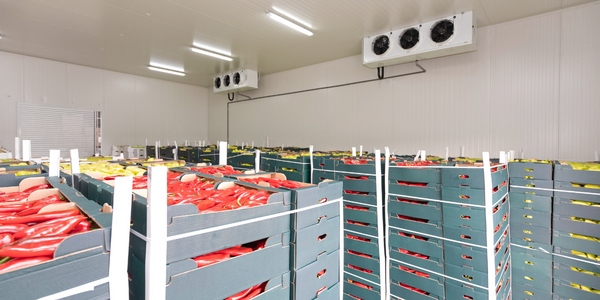Riyadh Dry Port's Transition to Virtual Environment Ensures Uninterrupted Operations
Customer Company Size
Large Corporate
Region
- Middle East
Country
- Saudi Arabia
Product
- Navis N4
- SAP
- VMWare
Tech Stack
- Virtualization
- Data Center Infrastructure
- Backup and Recovery Systems
Implementation Scale
- Enterprise-wide Deployment
Impact Metrics
- Productivity Improvements
- Customer Satisfaction
- Digital Expertise
Technology Category
- Platform as a Service (PaaS) - Data Management Platforms
- Infrastructure as a Service (IaaS) - Cloud Computing
Applicable Industries
- Transportation
Applicable Functions
- Logistics & Transportation
- Business Operation
Use Cases
- Predictive Maintenance
- Fleet Management
- Remote Asset Management
Services
- System Integration
- Cloud Planning, Design & Implementation Services
About The Customer
Riyadh Dry Port (RDP), located in Riyadh, the capital city of Saudi Arabia, is owned and operated by Baas International Group. It is the only dry port in Saudi Arabia that handles an import container volume of over 300,000 TEUs each year. RDP is connected to the Sea Port of Eastern Province in Dammam and is a rail facility, transporting containers by rail from Dammam Sea Port to Riyadh Dry Port. Since being taken over by BIG, RDP has achieved an average growth of 9.75% annually in import volumes. It is the only logistics hub in the Kingdom to implement and run on Navis N4 2.3. RDP values reliability and efficiency, having experienced firsthand the effects of unforeseen events. The port has continued to evolve with Navis N4 to maintain efficient, scalable, and flexible operations.
The Challenge
On October 5th, 2016, Riyadh Dry Port (RDP) faced a major electricity breakdown that brought all operations, systems, and technical departments to a standstill. This unexpected issue severely affected customers and stakeholders, as the port environment requires continuous operations. Every minute of system breakdown can have catastrophic side effects. However, the N4 system was the only one still operational, with no data loss at both sites. The data centers were supported by generators and a robust UPS system, allowing the primary and secondary data centers to run smoothly. Because N4 continued to operate, port operations were unaffected by the electricity impact. The BIG IT team emerged unscathed from the 7-hour electricity shutdown due to the robust and reliable IT infrastructure set up inside the port. The N4 systems remained stable and consistent, supporting other systems.
The Solution
Riyadh Dry Port (RDP) migrated their physical N4 systems to a virtual environment and set up secondary data centers to ensure 24/7 availability of their N4 2.3.10 system. The transition was smooth, with N4 adapting easily to the VMWare environment. RDP had two data centers, allowing data synchronization and replication at both sites. The transition was completed in approximately six to eight hours of downtime on a Friday, after which the physical servers for Navis and SAP were efficiently migrated to the VMWare virtual environment. RDP conducted appropriate unit testing and integration testing for both applications over three weeks, with all routine maintenance pre-scheduled upon confirmed downtime. The proven reliability of N4 in the event of a system breakdown has led to consistent growth for RDP. Navis N4 2.3 runs 24/7, 365 days a year with no downtime due to the backup site. N4 easily integrates with other applications, and running N4 and SAP together has leveraged operational efficiency to another level. The SAP Billing module retrieves its data from N4, and the front-end N4 application is scalable and easy to understand. N4 is the backbone of port operations at RDP, streamlining operational activities and improving gate and yard operations by more than 75%.
Operational Impact
Quantitative Benefit

Case Study missing?
Start adding your own!
Register with your work email and create a new case study profile for your business.
Related Case Studies.

Case Study
Airport SCADA Systems Improve Service Levels
Modern airports are one of the busiest environments on Earth and rely on process automation equipment to ensure service operators achieve their KPIs. Increasingly airport SCADA systems are being used to control all aspects of the operation and associated facilities. This is because unplanned system downtime can cost dearly, both in terms of reduced revenues and the associated loss of customer satisfaction due to inevitable travel inconvenience and disruption.

Case Study
IoT-based Fleet Intelligence Innovation
Speed to market is precious for DRVR, a rapidly growing start-up company. With a business model dependent on reliable mobile data, managers were spending their lives trying to negotiate data roaming deals with mobile network operators in different countries. And, even then, service quality was a constant concern.

Case Study
Digitize Railway with Deutsche Bahn
To reduce maintenance costs and delay-causing failures for Deutsche Bahn. They need manual measurements by a position measurement system based on custom-made MEMS sensor clusters, which allow autonomous and continuous monitoring with wireless data transmission and long battery. They were looking for data pre-processing solution in the sensor and machine learning algorithms in the cloud so as to detect critical wear.

Case Study
Cold Chain Transportation and Refrigerated Fleet Management System
1) Create a digital connected transportation solution to retrofit cold chain trailers with real-time tracking and controls. 2) Prevent multi-million dollar losses due to theft or spoilage. 3) Deliver a digital chain-of-custody solution for door to door load monitoring and security. 4) Provide a trusted multi-fleet solution in a single application with granular data and access controls.

Case Study
Vehicle Fleet Analytics
Organizations frequently implement a maintenance strategy for their fleets of vehicles using a combination of time and usage based maintenance schedules. While effective as a whole, time and usage based schedules do not take into account driving patterns, environmental factors, and sensors currently deployed within the vehicle measuring crank voltage, ignition voltage, and acceleration, all of which have a significant influence on the overall health of the vehicle.In a typical fleet, a large percentage of road calls are related to electrical failure, with battery failure being a common cause. Battery failures result in unmet service agreement levels and costly re-adjustment of scheduled to provide replacement vehicles. To reduce the impact of unplanned maintenance, the transportation logistics company was interested in a trial of C3 Vehicle Fleet Analytics.

Case Study
3M Gains Real-Time Insight with Cloud Solution
The company has a long track record of innovative technology solutions. For example, 3M helps its customers optimize parking operations by automating fee collection and other processes. To improve support for this rapidly expanding segment, 3M needed to automate its own data collection and reporting. The company had recently purchased the assets of parking, tolling, and automatic license plate reader businesses, and required better insight into these acquisitions. Chad Reed, Global Business Manager for 3M Parking Systems, says, “With thousands of installations across the world, we couldn’t keep track of our software and hardware deployments, which made it difficult to understand our market penetration.” 3M wanted a tracking application that sales staff could use to get real-time information about the type and location of 3M products in parking lots and garages. So that it could be used on-site with potential customers, the solution would have to provide access to data anytime, anywhere, and from an array of mobile devices. Jason Fox, Mobile Application Architect at 3M, upped the ante by volunteering to deliver the new app in one weekend. For Fox and his team, these requirements meant turning to the cloud instead of an on-premises datacenter. “My first thought was to go directly to the cloud because we needed to provide access not only to our salespeople, but to resellers who didn’t have access to our internal network,” says Fox. “The cloud just seemed like a logical choice.”






